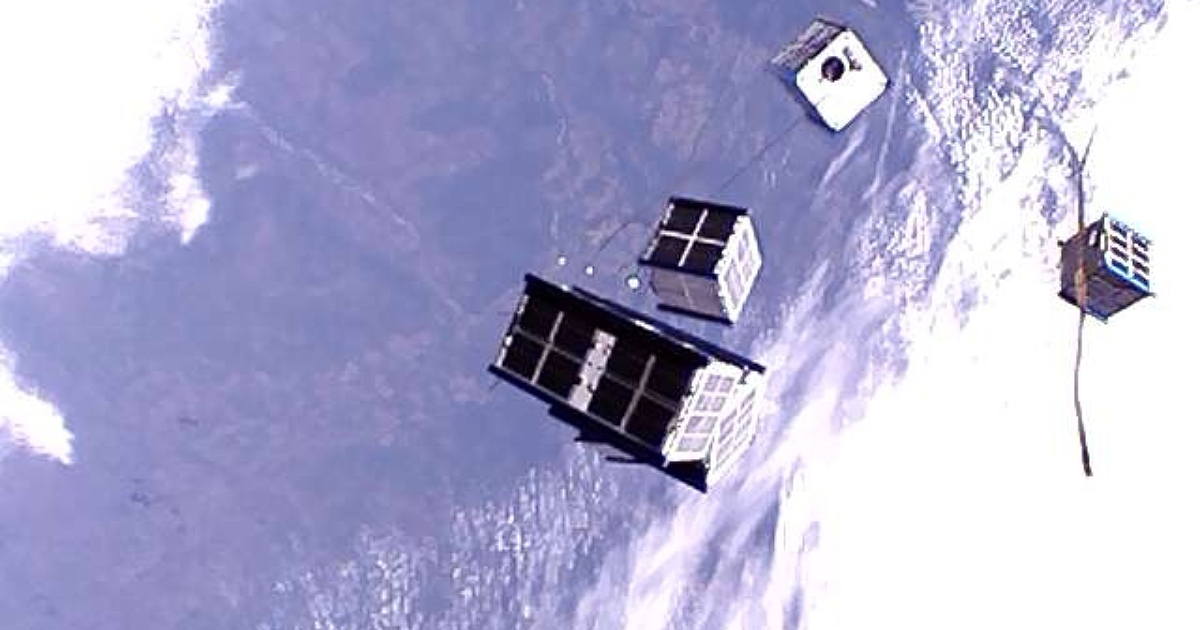StratoSat TK-1, a small spacecraft with six picosats designed by Geoscan and Stratonavtika, was recently launched into space. On 11 July, at 9:40 (Moscow time) the container successfully opened, with mini-satellites going on their own flight. They have already made contact and are sending telemetry. It was the first-ever launch of satellites into space by using a CubeSat in Russia.
The specialists who designed the Geoscan 3U platform, serving a basis for StratoSat TK-1, prepared for this event in advance. After the launch they have tested the system’s workflow, received a radio beacon, established a stable radio connection between the ground control station and the satellite in the UHF band. Then, our colleagues carried out the initial stabilization of the device and checked the readiness of the camera for shooting: they took a photo and a video recording, which were successfully received by the ground station.
On 10 July, the day before picosats’ releasing, the design team determined the current orientation of the satellite and changed it so that when the container was opened, the camera would look at the Earth. As a result, the photos were not overexposed. After that, a flight mission for the next day was sent to the device.
On the morning of July 11, StratoSat TK-1 successfully received all the commands: turning on the camera, burning the threads, opening the doors of the mother spacecraft’s third unit, shooting with the Geoscan HRCAM-S video camera and taking photos with the low-resolution backup camera, separating the picosats and recording video to device’s memory. Our specialists have already received pictures of how the mini-satellites released while the video will come in parts because the UHF band has a low transmission rate.
Denis Efremov, CEO at Stratonavtika, says, ‘Pico-satellites that have been launched into space can fit in the palm of your hand as their size is only 5*5*5 and 5*5*10 cm. Despite their compactness, they have the functionality of transmitting messages through space and even orbital photography. The main purpose of the launched group of picosats is educational activities for school and university students within the Space-π program. One of the devices carries a payload designed and manufactured by schoolchildren from Chelyabinsk. Pupils and students from Samara, Moscow, Podolsk worked on other picosatellites together with the engineers of the Stratonavtika and MKS companies. And the device, assembled with RuVDS, is the first space web server with the function of sending sites directly from orbit. The StratoSat TK-1 itself was created jointly with Geoscan. The new satellite format makes it possible to launch your own spacecraft 10 times cheaper than the most common CubeSat format’.
The StratoSat TK-1 continues to transmit telemetry and images to radio amateurs around the world. It has been assigned the tracking number NORAD 57167 and the call sign RS52S.
